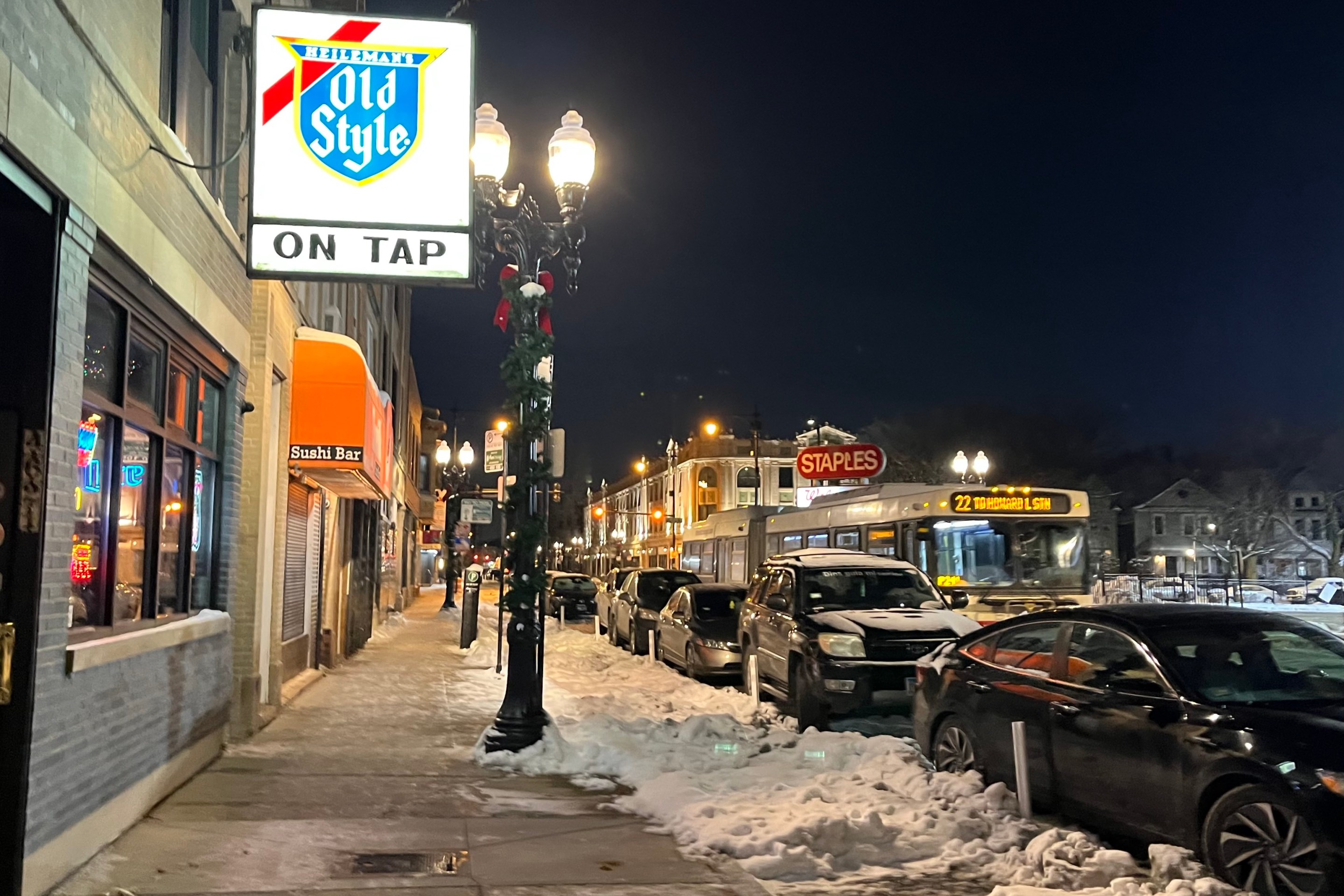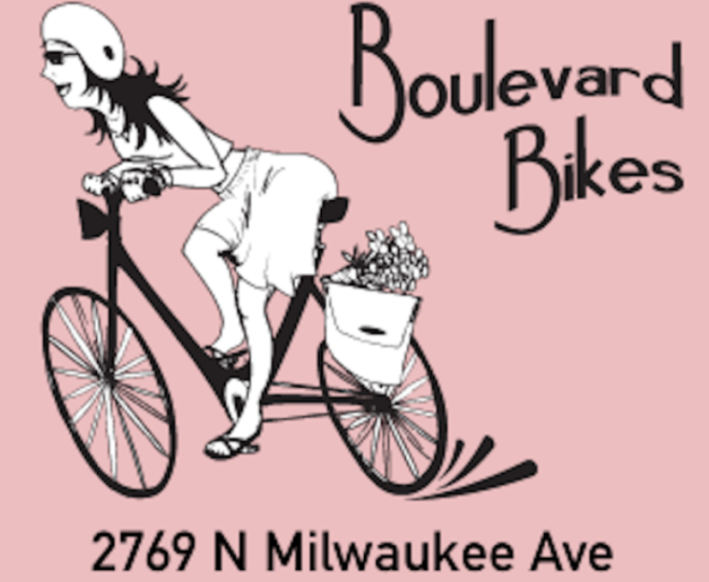
Last Thursday, the Active Transportation Alliance held its annual Movers and Shakers Ball, a fundraising gala to support the work of the advocacy group, which celebrates its fortieth anniversary this year.
The festivities took place at Walden Chicago, 2145 W. Walnut St., an event space tucked away in the industrial corridor between Humboldt Park and the West Loop. A photo station with a penny farthing bicycle was placed near the entrance, a tie-in to the 1933 Chicago World’s Fair theme of the event. A three-piece band played an eclectic mix of pop covers. Exhibit tables lined two of the walls, each with a plan to make the city’s streets, waterways, and transit better serve residents.
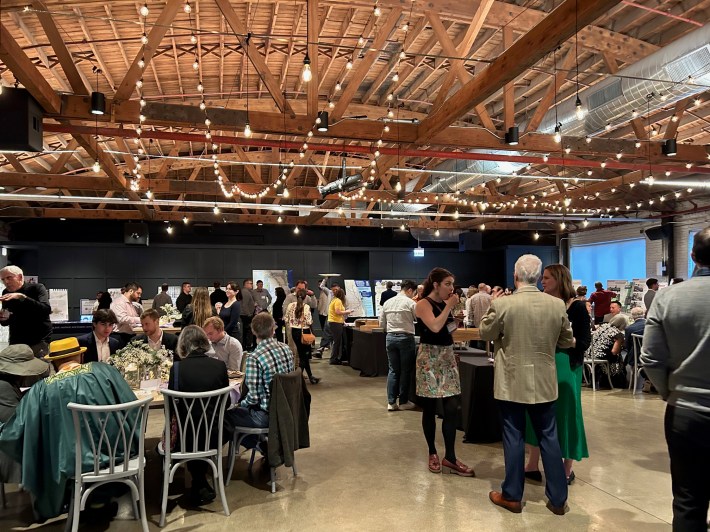
Well over 100 attendees milled about, sipping cocktails, nibbling hors d’oeuvres, mingling, and studying the presentations by ten design firms and the University of Illinois Chicago’s College of Urban Planning. The latter's table posited a mobility justice project to reconnect what was once the Valley, a predominantly Black neighborhood that was decimated by the construction of the Eisenhower expressway in the 1950s.

Other standout concepts included a proposal by Ross Barney Architects and ATA to repurpose two lanes of Wacker Drive along the riverfront into a park and bike path, essentially expanding the Riverwalk at street level.
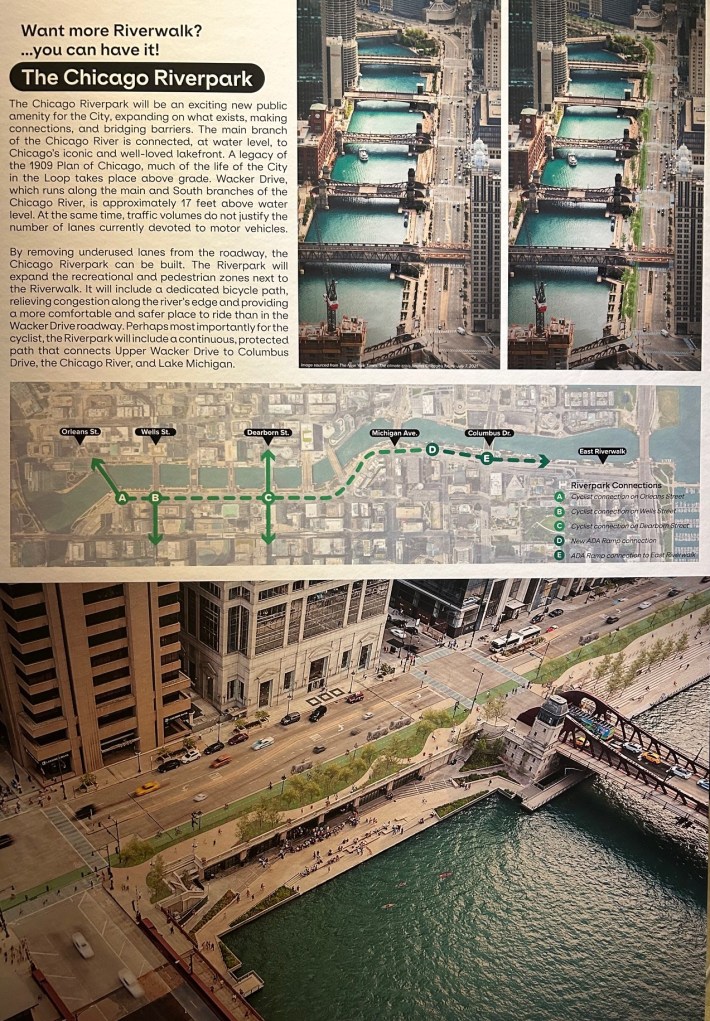
There was a plan by MKSK Studios to integrate the Chicago River and the Sanitary and Ship Canal into Chicago’s transit systems, expanding water taxi service, adding "Divvy for the River" paddle shares, and doubling down on park and waterfront development, citing the Wild Mile "Floating Eco-Park" near Goose Island as inspiration.
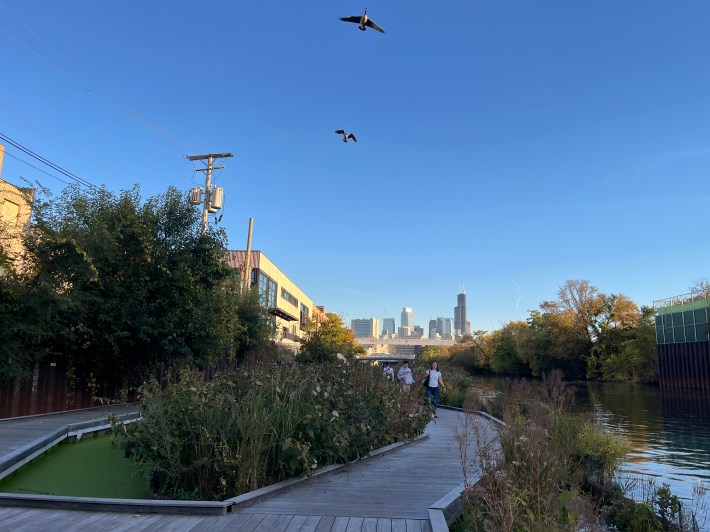
Stanley Consultants proposed a Superblocks pilot, inspired by the vehicle-restricted sections of Barcelona conceived by architect Salvador Rueda in the 1990s. There was also Ashlink from Christopher B. Burke Engineering, a dream project of either A. an elevated rail line or B. a streetcar running down the median of Ashland Avenue from Roscoe Avenue to 63rd Street. That would create the high-speed north/south route everyone living west of Halsted dreams about. That actually almost happened in the 2010s, through the City's Ashland bus rapid transit proposal, but it was shelved after pushback from drivers.
I spent quite a bit of time at the Smith Group’s imaginative exploration of Chicago alleyways. The firm mapped out all alleys that run uninterrupted for a mile or more, evaluating where they lead to parks and other amenities. The exhibit imagined mid-block crossings to better connect alleyways for non-motorized users, as well as beautification and activation activities. (A related project is the CTA's plan for an under-'L' public space as part of the current Red and Purple Modernization project in Uptown and Edgewater.) I was taken with the attention given to this under-appreciated asset woven into the map of the city. In Chicago, behind every great road is an alley.
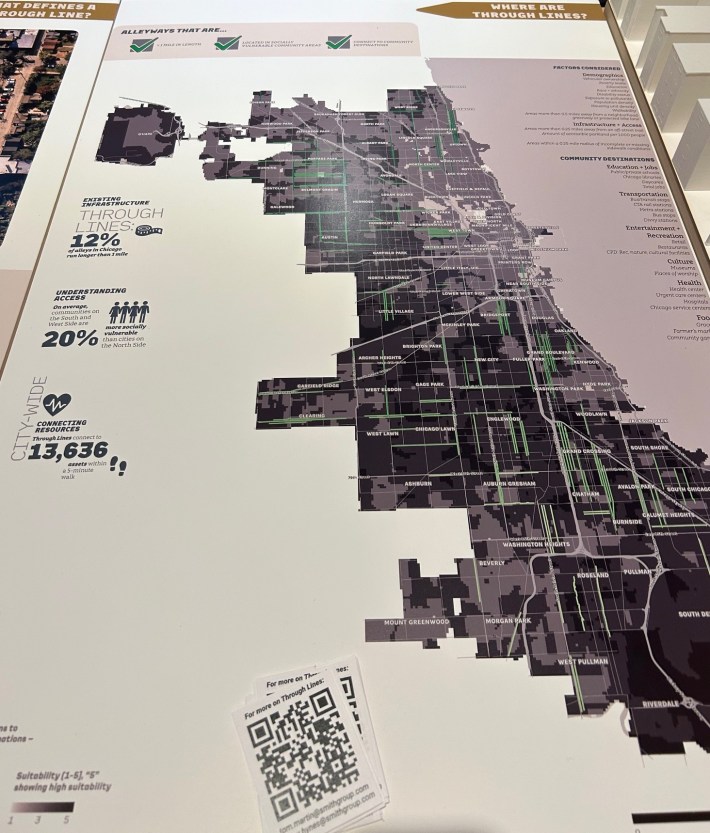
The program featured remarks by ATA executive director Amy Rynell, who shared a brief history of the organization, going back to when it was the Chicagoland Bicycle Federation. Rynell said the name changed as the organization leaned into multimodal sustainable transportation efforts. She then listed a few recent advocacy wins, including the 2019 state bill that allocates $50M annually for bicycle and pedestrian projects, and the 2020 bill requiring Illinois to pay for all bike/ped infrastructure on State-owned roads.
However, "it’s still true that we are swimming upstream against car-centric policy," Rynell said. When she relayed that the U.S. Department of Transportation is pulling funding from bike projects, the crowd booed. "But these are only making us stronger," she declared. "Unifying people who believe in our mission."
Rynell then read off a list of maddening headlines from the past week: traffic fatalities on the rise, Chicago’s air quality amongst the worst in the nation, Chicago and New York tied for worst traffic congestion, Chicago facing transit collapse.
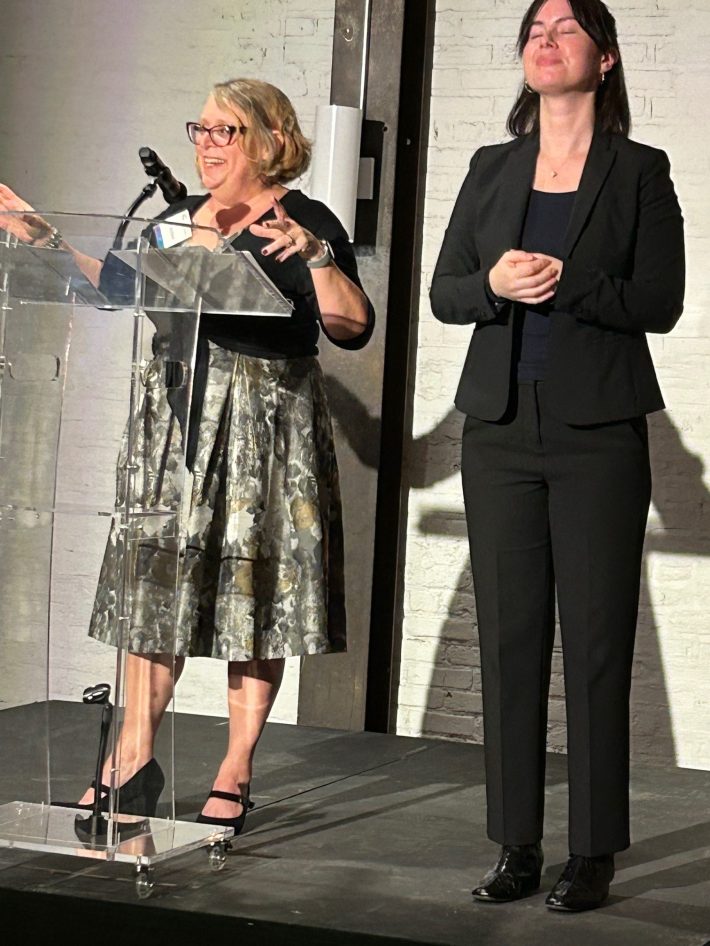
Advocacy efforts at ATA are currently focused on that last headline, along with other advocates, organizations, and experts, pressing lawmakers in Springfield to commit to $1.5 billion in support for Chicagoland’s transit systems, along with governance reforms. The combined systems face an approximate $770M budget gap, as pandemic relief funding runs out. Failure to gain support at the state level could be disastrous, potentially leading to suspension of much CTA rail service, elimination of many CTA bus routes and weekend Pace service, and severe cuts to Metra service.
The pressure is on to make a deal before the Illinois General Assembly adjourns on May 31. ATA has scheduled two transit days of action – May 8 and 13 - asking folks to canvas at train stations and bus stops to urge riders to contact their lawmakers. Details and registration are on ATA’s website.
Rynell concluded by emphasizing the importance of visionary ideas and ATA’s mission to create a region "where everyone can move safely, affordably and equitably."
Learn more about ATA’s Transit Days of Action and register here.

Did you appreciate this post? Streetsblog Chicago is currently fundraising to help cover our 2025-26 budget. If you appreciate our reporting and advocacy on local sustainable transportation issues, please consider making a tax-deductible donation here. Thank you!



